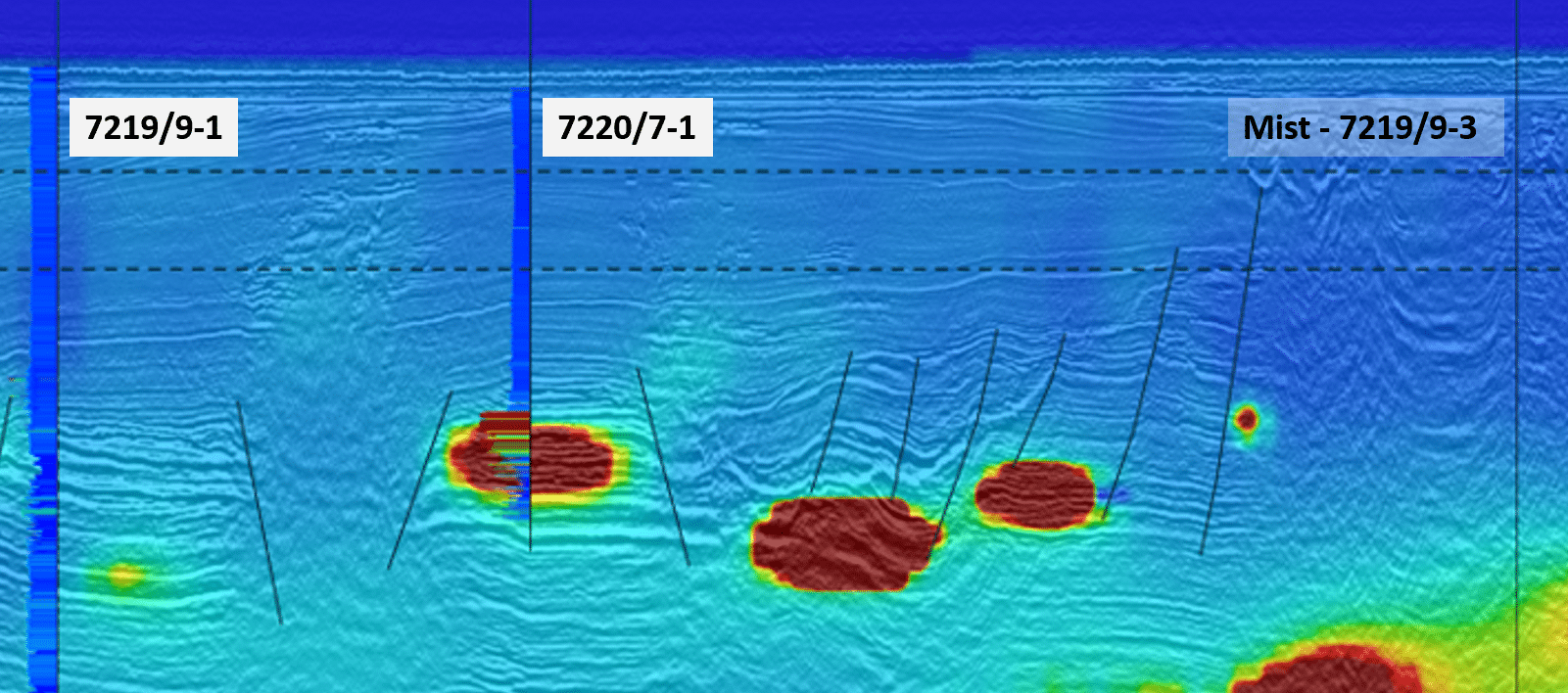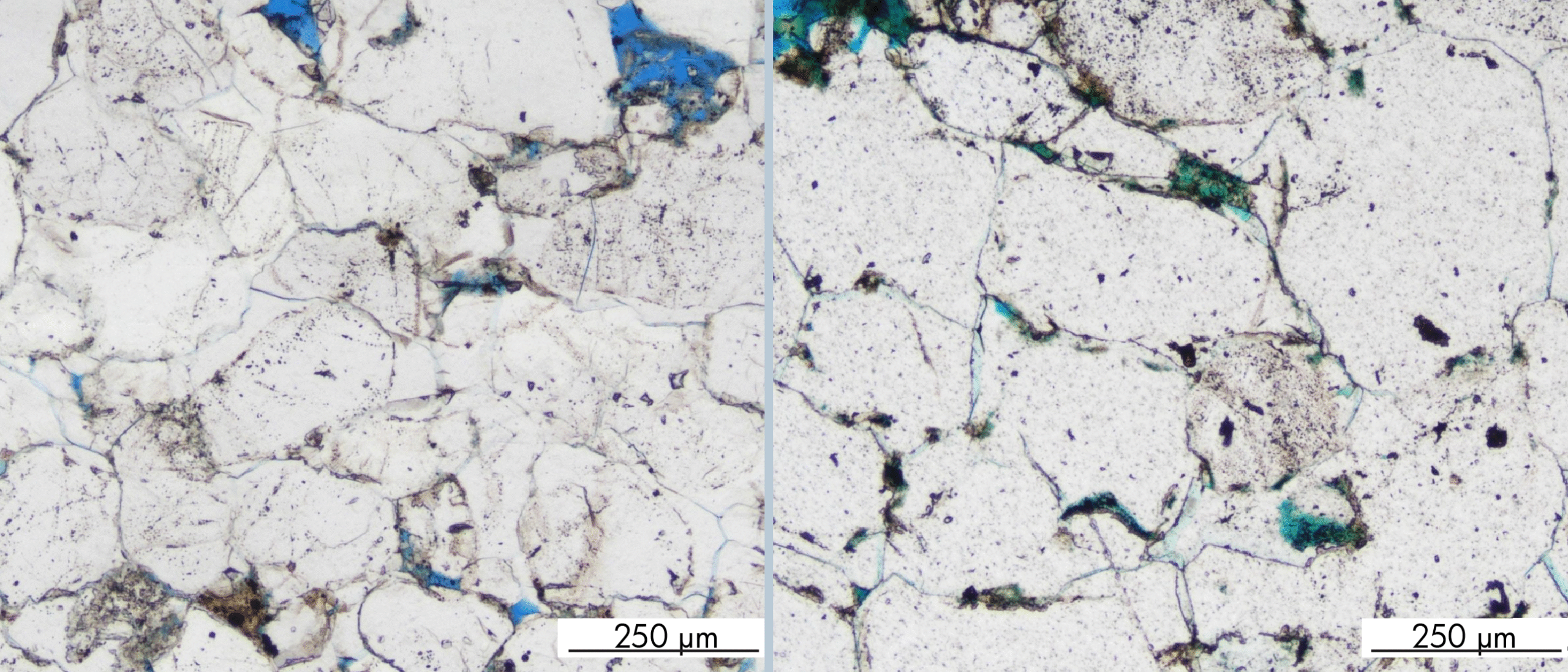On Monday 13th July, Equinor and partners Vår Energi and Petoro spudded exploration well 7219/9-3 in PPL 552 in the Barents Sea, about 5 kilometres south of the Kayak oil discovery. The target is likely to be the Upper Triassic-Lower Jurassic Tubåen Formation, which is expected at around 600 m below seabed.
Following well spud, EMGS published an article on LinkedIn predicting the outcome of this well based on legacy CSEM data. They argue that the well is on track to become the fourth consecutive disappointing well drilled on a CSEM negative this year, after Grind, Gabriel and Sandia all turned out to be dry.
The featured image of this article shows a cross-section through the 7219/9-1 (dry) well on the left, via the 7220/7-1 Havis discovery well through to the currently drilling Mist well on the right. Red colours are high resistivities up to around 90 Rv (Ωm) and light blue represent values of around 10 Rv (Ωm). As can be clearly seen on this section, the Havis discovery lines up with a resistive anomaly, whilst the 7219/9-1 well does not, and neither the currently drilling Mist well.
With this in mind, and the supporting material from the Wisting area in the Barents Sea where there is a 100% correlation between well results and CSEM, EMGS concludes that it seems likely that Mist will be another dry hole.
HENK KOMBRINK





